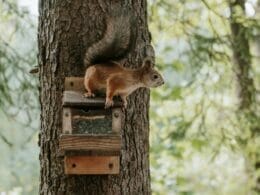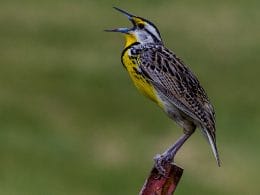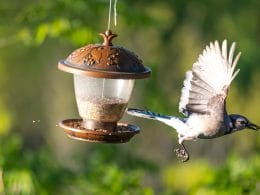Hawks that are located in a city environment will have a diet that consists of other birds as well as small animals. But what do hawks eat ?
Hawks feed on rodents, rabbits, lizards, snakes, fish, and even bats. If the opportunity presents itself, a large hungry hawk will even carry off smaller livestock like small lambs and baby goats. However, even the largest hawk can only carry up to 5 pounds.
Let’s learn more about what hawks eat .
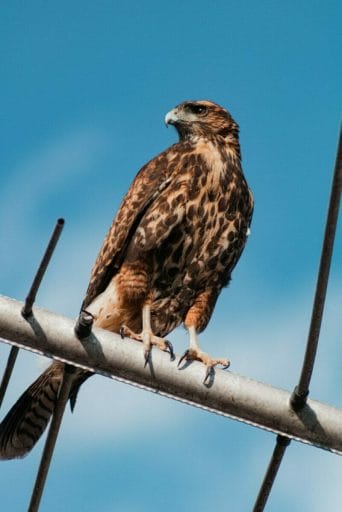
What is in a Baby Hawk’s Diet?
Just like adult hawks are carnivores, so are their offspring. A baby hawk’s diet consists mainly of insects, lizards, catfish, carp, and other crustaceans. This is also what baby hawks eat in the city.
If you find an abandoned baby hawk, it is imperative that you don’t feed it bread and milk, but rather small pieces of meat followed by a few drops of water. A dropper or small syringe may be used when giving the baby hawk some water.
Author Note: Due to the sharpness of their beaks and talons, extreme care should be taken when assisting these animals. If you are unsure, it is always best to wait until the relative trained authority can assist.
What are the Typical Characteristics of Hawks?

Clear Vision
Hawks are famous for their eyesight, and it is a well-documented fact that hawks have excellent eyesight. With 20/20 vision that is eight times more acute than humans, hawks really do have incredible eyesight. Their amazing vision is what allows hawks to eat most small animals that live in the city.
Deadly Talons
Hawks have taloned feet that are designed for capturing and securing prey, and this is quite common amongst most birds of prey. They also have sharp, hooked beaks that are designed for biting and ripping flesh- a true characteristic of a bird of prey.
Average Size
The male Hawk is slightly inferior in size when compared to other birds of prey and even female hawks.
The male Hawk is smaller than the female, and the breeding season starts at the end of Spring or early summer.
Nesting
Larger females hawks will lay one or two eggs each year while the smaller species lay one or two eggs each year. Hatchlings of smaller hawk species can grow their full size in just four weeks, while hatchlings of larger species of hawks can take around three months to be fully grown.
Hawks mate for life, but should a partner die, and they will find a new one relatively quickly.
Different Species of Hawks
There are two types of hawks, namely Buteos and Accipiters.
The Buteos
Also known as soaring hawks, the Buteos hawks have wings that are much broader with shorter tails, which assists them in soaring high when flying.
The Accipiter
Also known as woodlands hawks, the Accipiter has wings that are short and rounded. The Accipiter hawks have longer tails that they use to dart into the trees at high speeds to attack and hunt other birds.
Accipiters (The Bird Hunting Specialists)
The Cooper’s Hawk

The Cooper’s Hawk feeds on small birds and land mammals and is medium in size.
Accipiters are excellent hunters of aerial and ground animals and have been designed to swoop acrobatically and at high speeds through dense forest. Cooper’s hawks fall into this category, with their primary hunting style being stealth and speed. Let’s go over what Cooper’s hawks eat in the city.
Favorite Meals of the Cooper’s Hawk are as follows:
- Medium-sized birds, especially songbirds (doves, jays, and robins)
- Small forest rodents like chipmunks, squirrels, and mice.
- When hungry will also eat insects, frogs, and snakes.
For the Bird Watchers
The best viewing time is during Spring when the Cooper’s Hawks are hunting to feed their offspring. Because Cooper’s Hawks have extremely healthy appetites, they time their nesting strategy with the availability of their major food source, which is the songbird.
At the young age of just five weeks, the Young Cooper’s Hawks can fly and hunt on their own.
The Sharp-Shinned Hawk

Sharp-shinned Hawks are the smallest of all recipients in North America and have the highest percentage of their diet being made up of songbirds. Songbirds make up almost one hundred percent of their diet. Sharp-shinned Hawks are similar to Cooper’s Hawks, with the main difference being that the Cooper’s Hawk is quite smaller.
What Do Sharp-shinned Hawks Eat?
Songbirds are huge fans of bird feeders, and the populations become concentrated in the winter. This makes them easy targets for the Sharp-shinned Hawk. They tend to target smaller birds and are opposed to hunting larger birds like quail, doves, or robins. They are often spotted hunting around parks and woodlands in the winter months.
Rather than nest in open fields or forests dominated by other tree types, the Sharp-shinned Hawk prefers evergreen trees to nest and perch.
Northern Goshawks
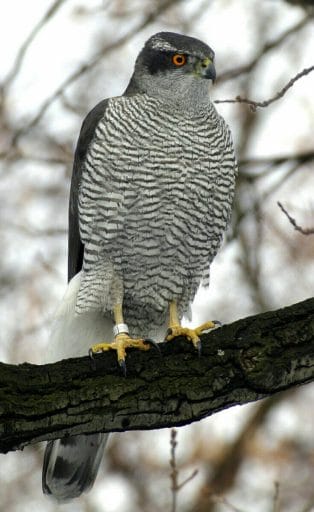
Of the entire accipiter family, the Northern Goshawk is the largest North American member. They rely on dense forest cover and stealth to catch their prey, on the ground and in the air.
Author Note: Their diet is more balanced between mammals and birds; this is because they are much larger than other hawks, like the Sharp-shinned and the Cooper’s Hawk.
What Do Northern Goshawks Eat?
Favorite foods of the Northern Goshawk are:
- Corvids
- Songbirds
- Woodpeckers
- Grouse
- Snowshoe hares
Occupying Canada and the Northern United States, as the name suggests, it is primarily a Northern hawk. There is also a European species of the Northern Goshawk found in other parts of the world. They perch on trees or moderate slopes and live at mid-high elevations. Prey that has been caught is taken to the perch to be eaten. Depending on their prey, Northern Goshawks have the ability to hunt in open areas and are just as effective in forested areas.
Northern Goshawks are considered to be opportunistic hunters, and while hunting, they will attack the first prey that they encounter.
Buteos (Soaring High In Open Landscapes)
Seen soaring high above open landscapes where they can see long distances, Buteos tend not to live too deep in the forest. Because of this, they are easier to spot in comparison to smaller forest-dwelling hawks.
Red-tailed Hawks
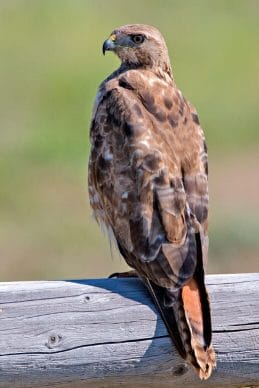
The Red-tailed Hawk’s primary source of food is small land mammals like rabbits and mice. In comparison to accipiters, they are not as fast and are less aerodynamic. Their hunting strategy involves watching from a distance and attacking vulnerable birds or mammals that are unable to escape.
Red-tailed Hawks prefer sparsely populated forests to hunt, with the occasional tree to perch and make a nest. Let’s go over what Red-tailed Hawks eat in the city.
What Do Red-tailed Hawks Eat?
The Red-tailed Hawk’s favorite prey are:
- Rabbits
- Squirrels
- Chipmunks
- Rats
- Mice
On occasion, they will also sometimes consume other birds, insects, and various types of reptiles. They will never say no to an easy meal, and like most successful predators, they are extremely opportunistic.
Soaring over the roadside or perched on telephone poles overlooking open fields for prey, these are very common hawks to see.
Red-Shouldered Hawks

Red-shouldered Hawks are often located in non-dense forested areas with plenty of opportunities for hunting and perching.
They are extremely skilled hunters, and their broad wings soften the sounds of flapping. This enables them to easily come upon unsuspecting prey.
Ferruginous Hawks
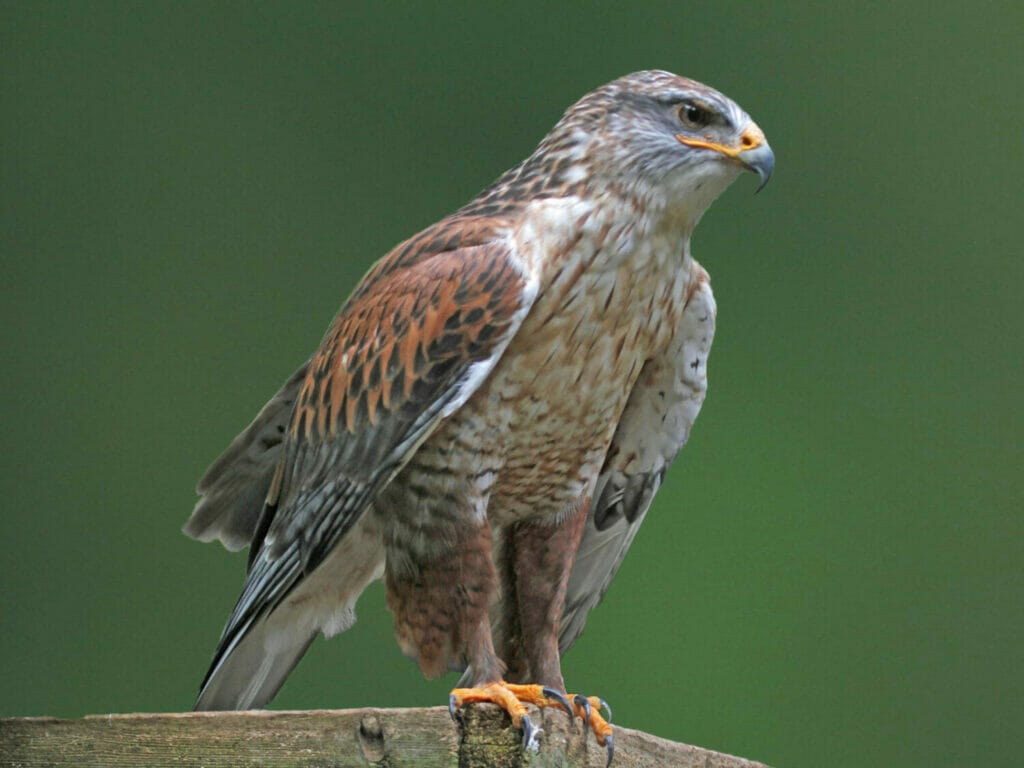
Ferruginous Hawks are considered to be primarily small mammal hunters and target ground-based mammals that can be seen from above.
They can be spotted standing outside their prey’s den, flying over open fields, or hovering over burrows.
They make their nests on the edges of mountains, on towers, and in trees.
What Do Ferruginous Hawks Eat?
A Ferruginous Hawk’s favorite foods are:
- Prairie dogs
- Gophers
- Snakes
- Small mammals
- Squirrels
- Jack rabbits
Ferruginous Hawks have the ability to hunt on the ground or in the air, and the type of prey varies depending on the easiest prey to find and hunt.
While most Ferruginous Hawks are solitary hunters, some will hunt in groups, and all congregate outside dens to increase the chances of a successful hunt.
Rough-legged Hawks
Rough-legged hawks are found in the Arctic circle and primarily hunt on the tundra. They have the ability to hunt on the ground or in the air, depending on the type of prey they are targeting. Their primary source of food is small mammals but have been spotted consuming carcasses in the winter months.
What do Rough-legged Hawks Eat?

A Rough-legged Hawk’s favorite foods are:
- Mice
- Voles
- Small mammal
- Carrion (animal carcass)
- Lemmings
- Squirrels
The Rough-legged Hawk’s diet is based on its mating season, similar to the Swainson Hawk. Since all Rough-legged Hawks fly south for the winter, their diet is also partially related to their migratory habits.
Author Note: Similar to the Swainson’s Hawks, the Rough-legged Hawk’s diet is based on mating seasons. This is partially related to their migratory habits since all Rough-legged Hawks fly south for winter.
In mating season, Lemmings are the prey-of-choice. Due to their great numbers during that time of year, they are easy prey to catch and feed their offspring.
In winter, when food is scarce, many Rough-legged Hawks will eat carrion.
Swainson’s Hawk

Swainson’s Hawks are especially well-known to cater their diets to the season. During the mating season, they often eat small mammals, which are plentiful at that time.
However, when mating season is over, Swainson’s Hawks frequently switch over to insects like grasshoppers or dragonflies, which are more common to find during the summer heat. Let’s go over what Swainson hawks eat in the city.
A Swainson’s Hawks favorite foods are:
- Grasshoppers
- Ground Squirrels
- Dragonflies Insect
- Insect Larvae Ground
Parting Thoughts
Hawks are magnificent birds of prey, and many cultures find it a good omen if a hawk is seen. We hope you found this article on what hawks eat in the city useful and informative.
Fly high friends!








